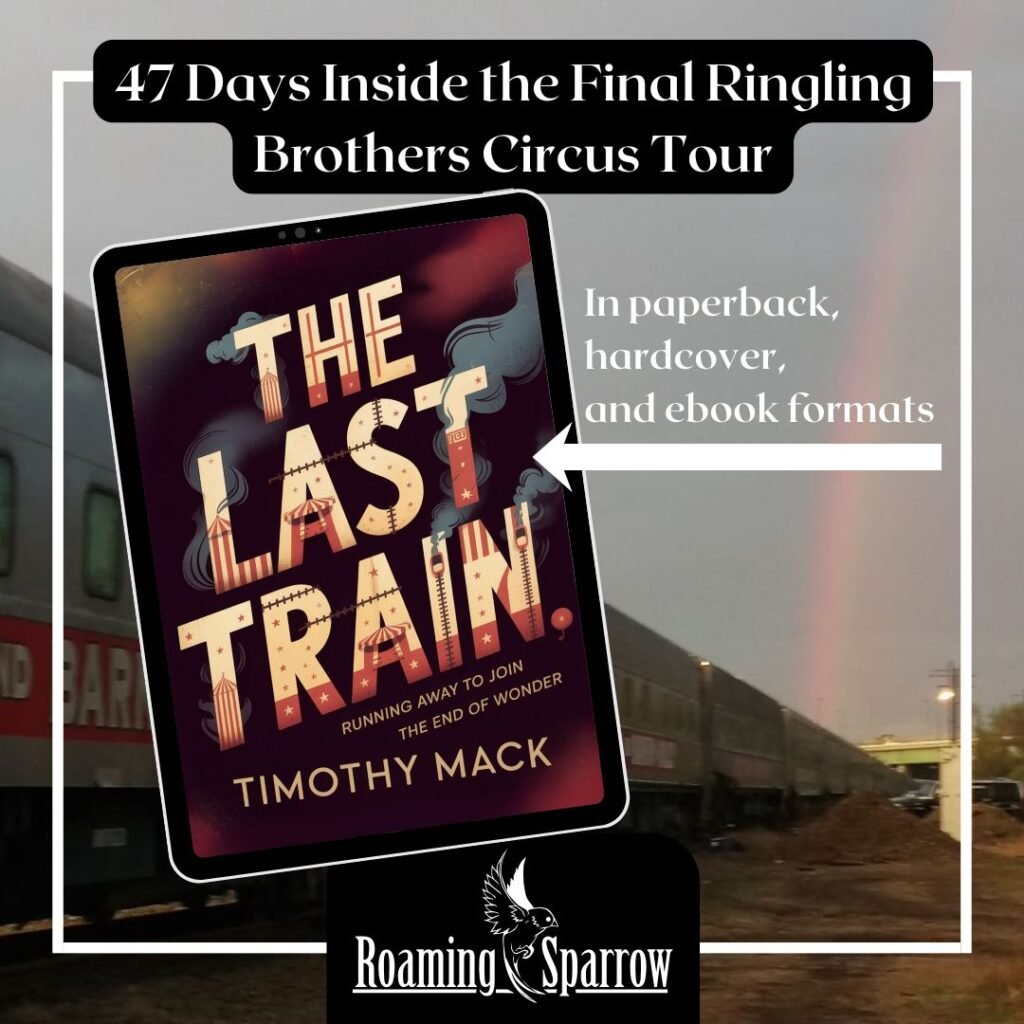
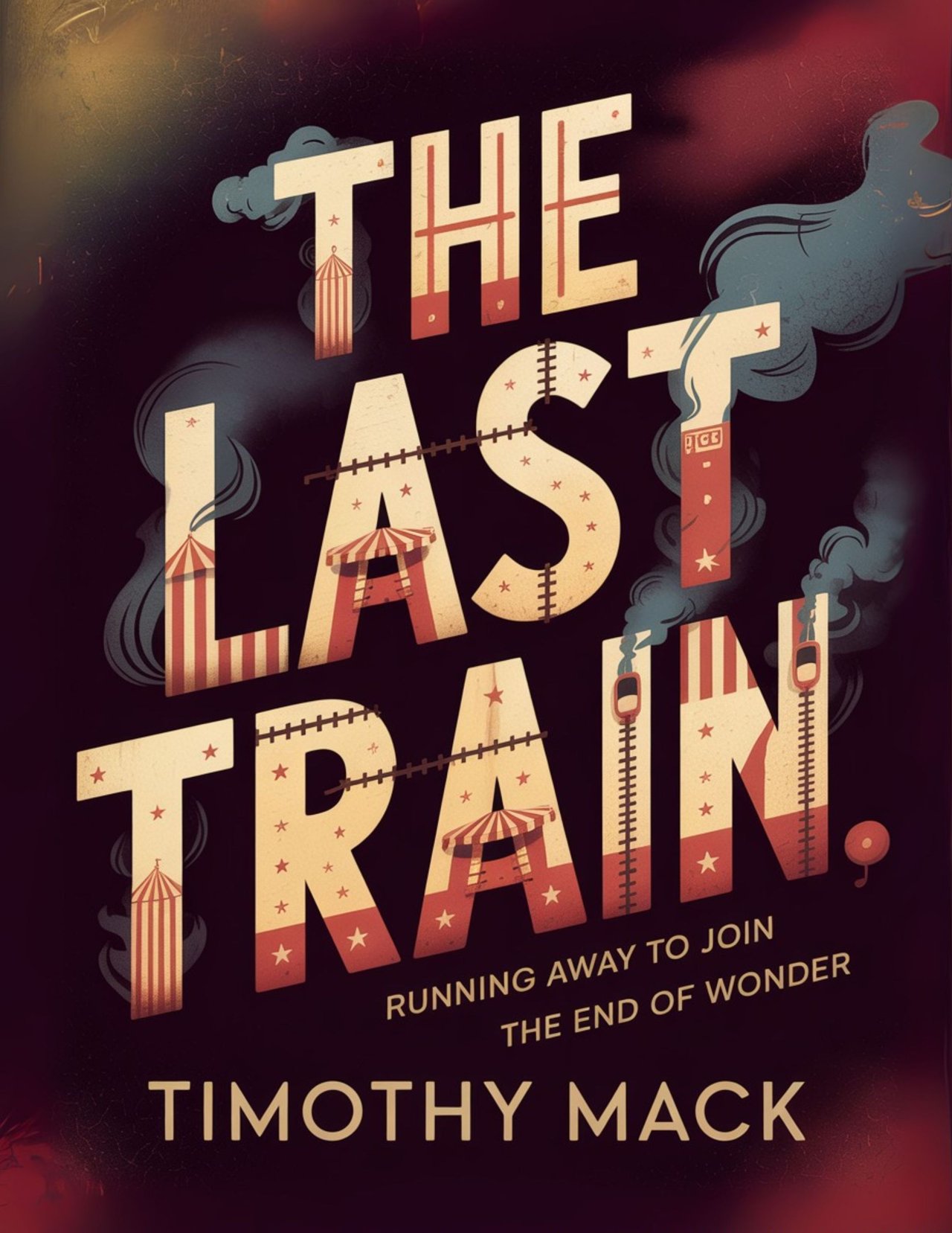 Ringling Brothers final tour
Ringling Brothers final tour
The lion’s roar shattered the Baltimore morning air as Massa lunged against the cage bars, his massive paws just inches from my face. In that split second, I understood I wasn’t just a tourist who had wandered into circus life—I was part of something raw, dangerous, and utterly real. Something that, in just seven weeks, would disappear from American culture forever.
This was April 2017, and I had made what many considered an insane decision: leaving my successful Atlanta circus company, Imperial Opa Circus, to spend 47 days as crew on the Ringling Brothers final tour. After 146 years, “The Greatest Show on Earth” was closing forever, and I couldn’t let that piece of American history slip away without experiencing it from the inside.
Get the Complete Story: The Last Train is available now on Amazon in paperback, hardcover, and ebook formats.
The Phone Call That Changed Everything
The opportunity came through Peter Gold, a contact in the circus world who knew I was looking for something more than the comfortable routine my Atlanta-based Imperial Opa Circus had become. We’d built a solid business over fifteen years with our contemporary circus performances, but when Peter called about joining Ringling’s final tour, I felt that familiar pull that every circus person knows—the call to be part of something bigger than yourself.
“They need crew,” Peter said simply. “Forty-seven days. You’ll live on the train, work load-ins and load-outs, be part of the machine. It’s the last chance anyone will ever have to experience this.”
The decision wasn’t easy. I’d have to leave Imperial Opa in capable hands, deal with insurance deadlines, and step away from financial security to join what one friend called “a sinking ship.” But some experiences can’t be measured in dollars, and witnessing the end of America’s longest-running entertainment institution felt like a responsibility, not just an adventure.
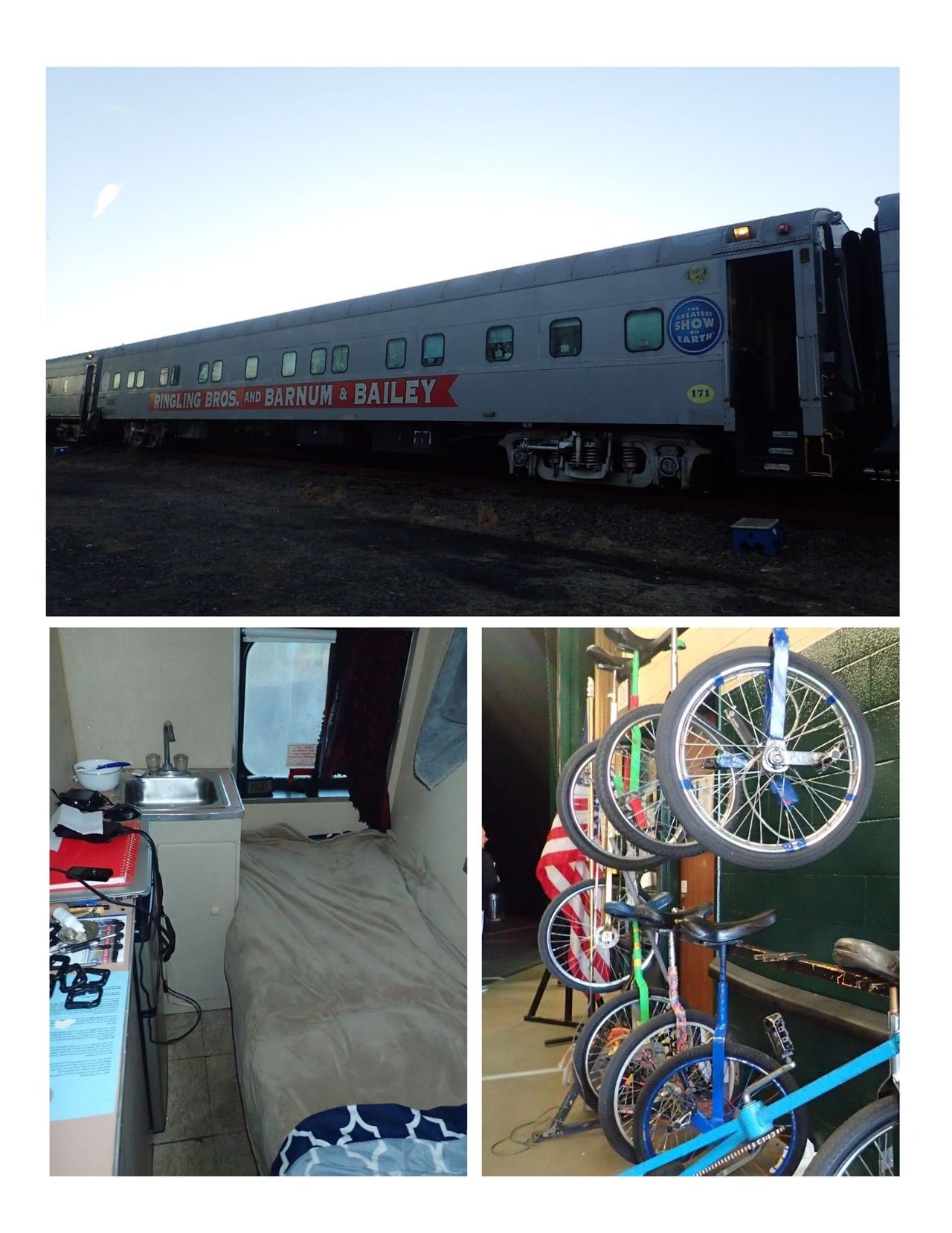 The Last Train: Inside Ringling Brothers Final Tour – A Circus Memoir
The Last Train: Inside Ringling Brothers Final Tour – A Circus Memoir
Life Aboard America’s Last Circus Train
Nothing prepares you for the scale of a Ringling Brothers operation. The Blue Unit’s train stretched nearly a mile long—56 cars carrying 300 people from over thirty countries, 500 tons of equipment, and enough logistics to make a military operation jealous. My home for those 47 days was Room 5 in Car 171, a converted Amtrak coach that had been serving circus families since 1995.
Circus train life creates a unique community unlike anywhere else on earth. The “Pie Car” served as our 24-hour diner and social center, where Chinese acrobats shared tables with American riggers, Mongolian horsemen played cards with European aerialists, and the constant rhythm of wheels on tracks provided the soundtrack to countless conversations in a dozen languages.
The train itself became a character in this story. Built from repurposed passenger cars, each with its own history and personality, it represented the last of a uniquely American tradition—the traveling circus train. When we rolled through small towns across the country, people lined the tracks to wave at something they instinctively knew they’d never see again.
The Work: More Than Just Moving Props
Working crew on the Ringling Brothers final tour meant mastering a brutal twelve-hour transformation process. We’d arrive at venues like Baltimore’s Royal Farms Arena or Charleston’s Civic Center and convert ice hockey rinks into circus venues, rigging aerial apparatus forty feet overhead and arranging seating for thousands of spectators.
The work was physically demanding and technically precise. Chain motors lifted tons of equipment to exact positions, specialized ice-covering systems protected arena surfaces from our massive load, and union crews worked alongside circus veterans who’d been perfecting these procedures for decades. Every setup followed choreographed precision—there was no room for error when you’re dealing with circus train life that moved to a different city every few days.
My supervisor, Gabe, was a whiskey-breathed veteran whose decades of experience showed in every efficient movement. He taught me that circus work isn’t about individual heroics—it’s about being a reliable part of something larger. Whether you’re operating a forklift, securing aerial rigging, or simply holding a flashlight in the right place at the right moment, everyone’s role matters when you’re creating magic for thousands of people night after night.
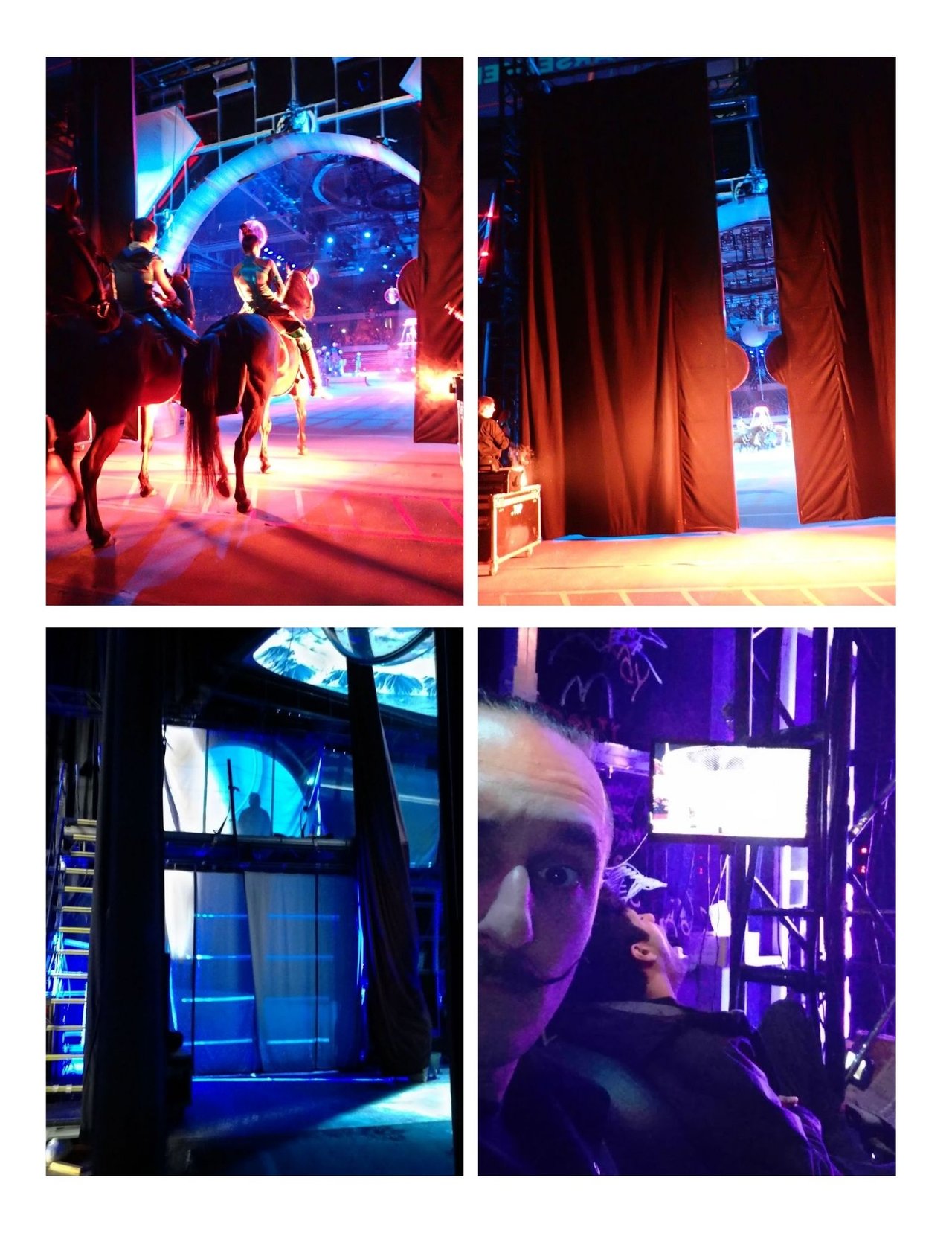 The Last Train: Inside Ringling Brothers Final Tour – A Circus Memoir
The Last Train: Inside Ringling Brothers Final Tour – A Circus Memoir
The People: International Families on Wheels
What struck me most about this circus memoir wasn’t the spectacle—it was the people. The Ringling Brothers final tour brought together performers and crew who represented the last generation of a dying art form. Chinese acrobats who’d trained since childhood, Mongolian horsemen whose skills stretched back centuries, American riggers who’d learned their trade from fathers and grandfathers in the same industry.
Natalia, a figure skater from Eastern Europe, became one of my closest connections on the train. She possessed that rare combination of artistic grace and practical wisdom that defines great circus performers. During our conversations over coffee in small-town diners, she’d use circus metaphors to explain life philosophy, always patient with my questions about her world.
The international mix created fascinating cultural exchanges. Brandon, an American trumpet player, would share jazz techniques with Romanian musicians. Chinese acrobats taught juggling tricks to American stagehands during downtime. Mongolian families prepared traditional meals in their train cars, filling entire sections with aromatic spices that mixed with the industrial smells of railroad equipment and circus gear.
But underneath all these connections was the unspoken knowledge that we were documenting something that would never exist again. Every conversation carried extra weight because we knew these relationships, formed in this unique environment, could never be replicated.
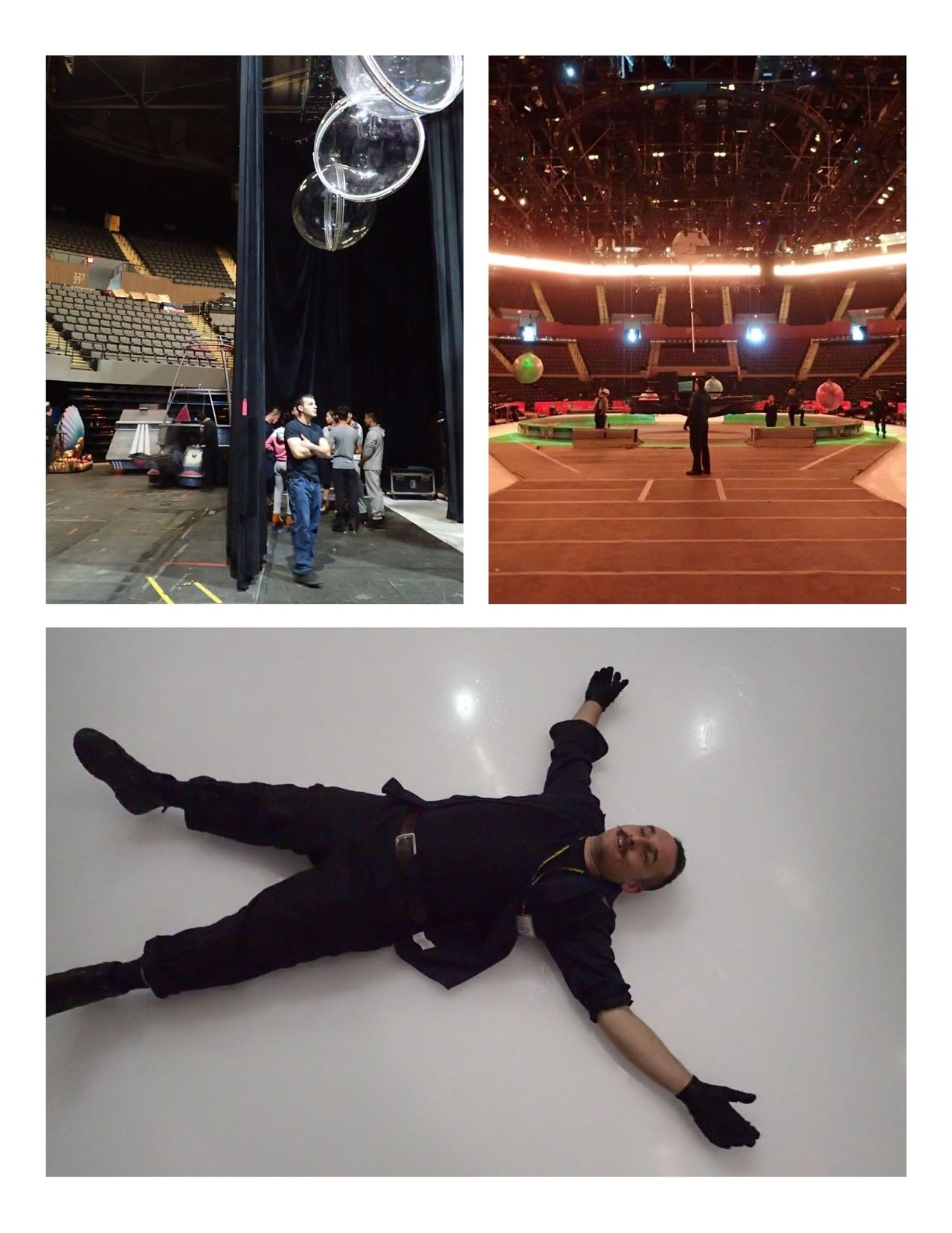 The Last Train: Inside Ringling Brothers Final Tour – A Circus Memoir
The Last Train: Inside Ringling Brothers Final Tour – A Circus Memoir
The most surreal chapter of our circus train life came during the final week in Uniondale, New York. After setting up our elaborate production at Nassau Veterans Memorial Coliseum, we received shocking news: Metallica’s “Worldwired Tour” was scheduled for May 17th, just four days before our final performance. We’d have to completely strike our entire circus setup, allow their rock concert, then rebuild everything for Ringling’s last shows.
The irony was perfect and painful. Here was one of metal’s biggest bands, representing modern entertainment’s evolution, literally displacing America’s oldest entertainment institution. We worked eighteen-hour shifts breaking down decades of circus tradition, watching Metallica’s road crew set up their contemporary spectacle in the same space where we’d been creating magic through aerial arts, live orchestral music, and death-defying performances.
Rebuilding after Metallica felt like resurrection. Every piece of equipment we reassembled carried the weight of finality—these rigging points, these curtains, these carefully calibrated systems would never be used again after May 21st. The crew worked with extra precision, knowing that any mistakes couldn’t be fixed on the next setup because there wouldn’t be a next setup.
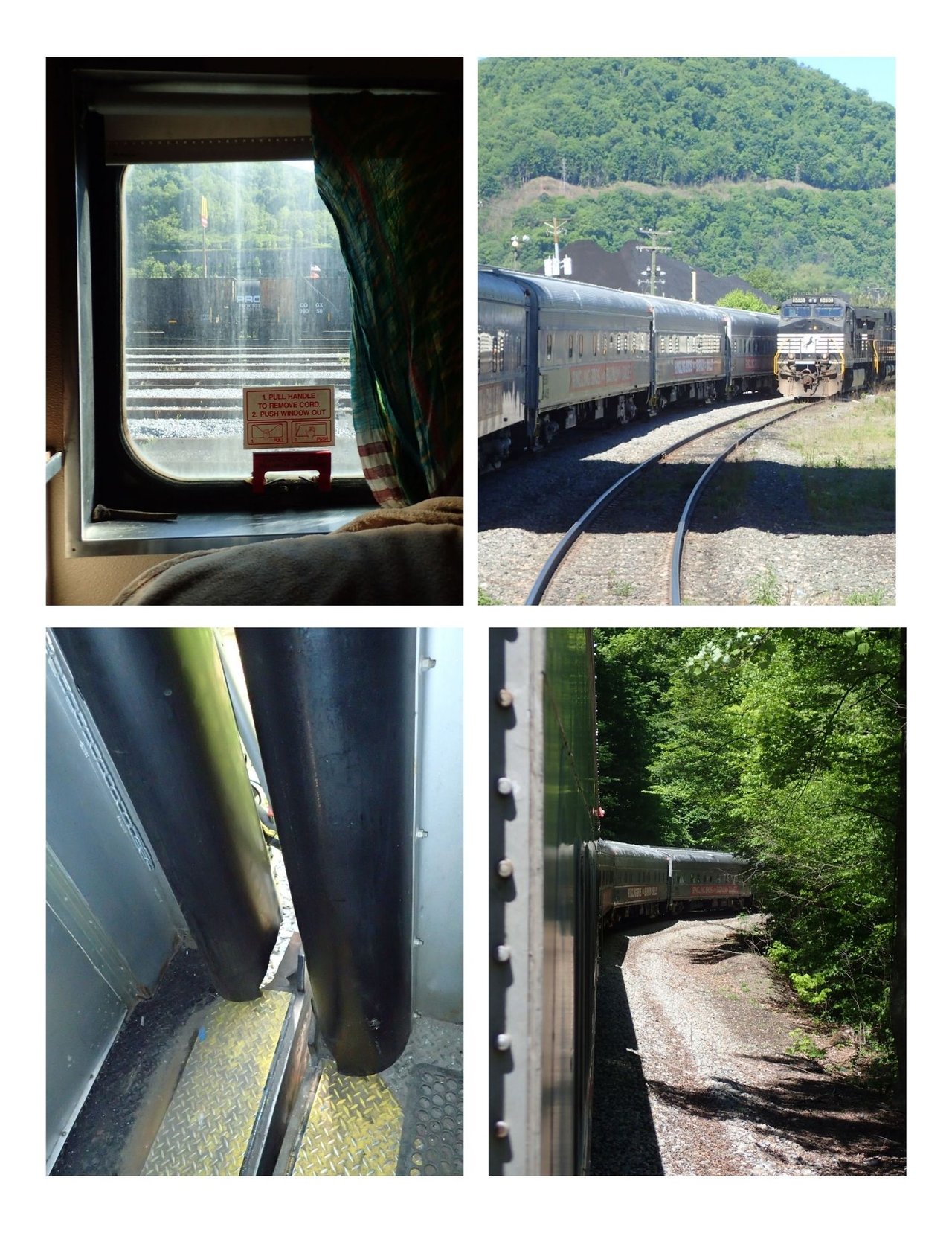 The Last Train: Inside Ringling Brothers Final Tour – A Circus Memoir
The Last Train: Inside Ringling Brothers Final Tour – A Circus Memoir
The Greatest Show’s Last Bow
May 21, 2017, arrived gray and heavy with emotion. Three final performances: 11 AM, 3 PM, and 7 PM. The greatest show on earth ending played out in real-time as media crews documented every moment, performers gave everything they had left, and audiences experienced something they knew was historical.
The final show itself was technically flawless. Alexander Lacey’s big cats performed their routines with majesty that defied their captivity. The Torres family’s Globe of Steel motorcycle act reached speeds that seemed to challenge physics itself. Aerial performers flew through routines they’d perfected over lifetimes of training. The live orchestral accompaniment—a signature element that separated Ringling from every other circus—provided emotional resonance that recorded music never could.
When Ringmaster Johnathan Lee Iverson delivered his final announcement—”We are, forevermore, the Greatest Show on Earth”—the arena fell silent except for the sound of grown performers crying. The audience sang “Auld Lang Syne” spontaneously, understanding they were present for the end of something irreplaceable.
Why Stories Like This Matter
Writing this circus memoir became more than preserving personal memories—it became cultural documentation. The Ringling Brothers final tour represented the end of a uniquely American institution, but more importantly, it demonstrated how communities form under extraordinary circumstances and how individuals choose meaning over security.
In our rapidly changing world, we’re constantly losing traditions, communities, and ways of life that can never be recovered. The circus train culture that existed for over a century—where international families lived and worked together in a mobile community, where skills passed down through generations, where artistry and commerce balanced in delicate tension—disappeared forever when our train pulled into storage for the last time.
But the lessons remain relevant. The circus train life taught me about adaptation, community building, and finding purpose in difficult circumstances. The international crew showed me how people from vastly different backgrounds can create family bonds when united by common purpose. The performers demonstrated how dedication to craft can create beauty that transcends cultural boundaries.
Most importantly, the experience reinforced something I’d always believed: life’s richest experiences often require leaving comfort zones. The security of my established Atlanta circus business couldn’t compare to the transformative power of being present for a historic moment.
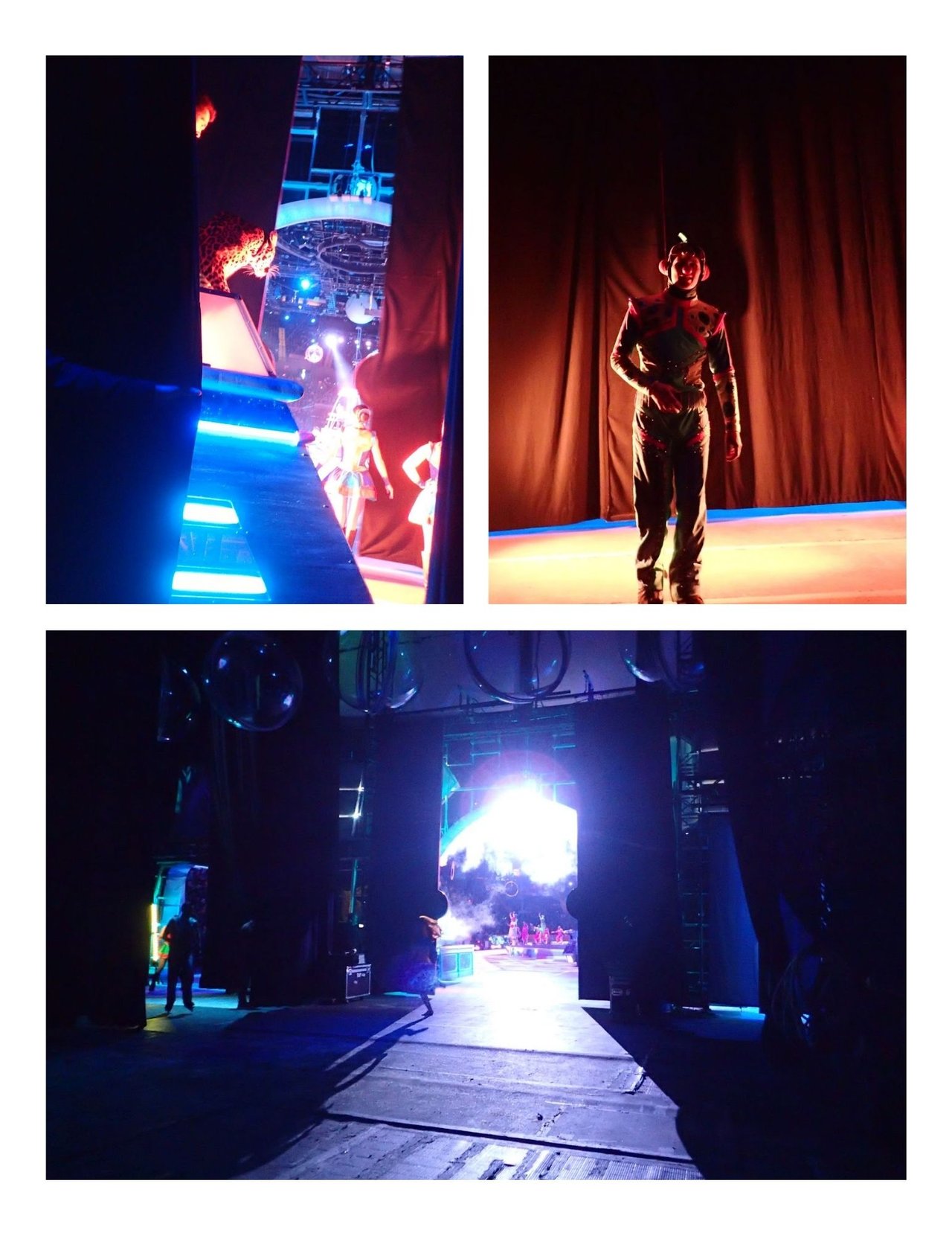 The Last Train: Inside Ringling Brothers Final Tour – A Circus Memoir
The Last Train: Inside Ringling Brothers Final Tour – A Circus Memoir
The Train Keeps Rolling in Memory
Years later, certain sounds still transport me back immediately: the rhythm of train wheels on tracks, the mechanical whir of chain motors lifting equipment, the multilingual chatter in the Pie Car during late-night meals. These sense memories carry emotional weight that photographs and videos can’t capture.
The relationships forged during those 47 days created lasting connections. Some performers found new opportunities in Vegas shows or international circuses. Others retired from performance altogether, their life’s work ended with the closing. A few, like myself, returned to regional circus work with deeper appreciation for the art form’s complexity and cultural significance.
The physical artifacts of our experience survive in scattered locations. My train car, 171, sits with fifteen others at Kirby Farm in Williston, Florida, where they serve as educational tools for underprivileged youth. The costumes, equipment, and wagons were auctioned to collectors and smaller circuses worldwide. The elephants—whose retirement preceded the show’s closure—live in specialized sanctuaries.
But the intangible elements—the community, the traditions, the accumulated knowledge of how to move a 300-person international family across America by rail—vanished forever when we said our final goodbyes.
Available Now: The Complete Story
The Last Train represents the largest book I’ve ever written, combining personal narrative with cultural documentation to preserve this unique slice of American history. The complete story includes details about the technical complexity of circus logistics, the international relationships that flourished within the train community, the business pressures that led to closure, and the emotional journey of being present for the end of an era, offering readers the complete experience of those transformative 47 days when I joined America’s last traveling circus.
ORDER THE LAST TRAIN ON AMAZON
Available in Paperback, Hardcover, and Ebook
Preserving Stories That Matter
The Ringling Brothers final tour represents one example of why documenting our experiences matters. Without stories, what do we have to connect us across time and culture? Every generation witnesses changes, endings, and transformations that future people will struggle to understand without firsthand accounts.
I’ve built my career around storytelling through circus arts, first with Imperial Opa Circus and now through writing about the experiences that shaped me. This memoir demonstrates my commitment to preserving cultural moments that might otherwise be forgotten.
If you have stories that need telling—whether they involve historical moments, unique communities, or personal transformations—I’m always interested in collaboration. Reach out through email, and let’s discuss how to preserve the experiences that matter most.
Some opportunities only come once. The chance to join the Ringling Brothers final tour was mine. The responsibility to tell that story truthfully, with respect for everyone who shared it, became my ongoing commitment to the circus community and to American cultural history.
The train may have stopped rolling, but the stories continue. They have to—because without them, we lose the connections that make us human.
Experience the complete journey: Get The Last Train on Amazon today
Available in all formats – Paperback • Hardcover • Ebook
 The Last Train: Inside Ringling Brothers Final Tour – A Circus Memoir
The Last Train: Inside Ringling Brothers Final Tour – A Circus Memoir
Source
